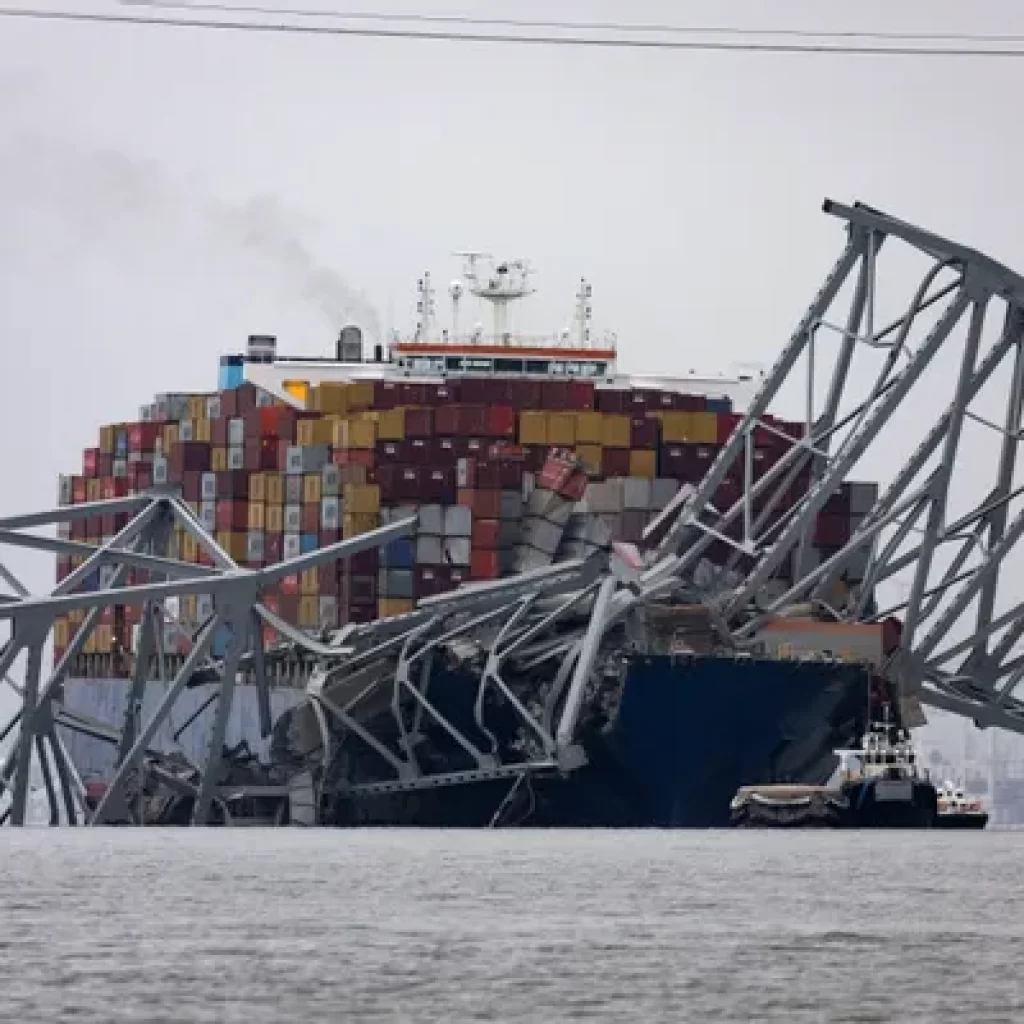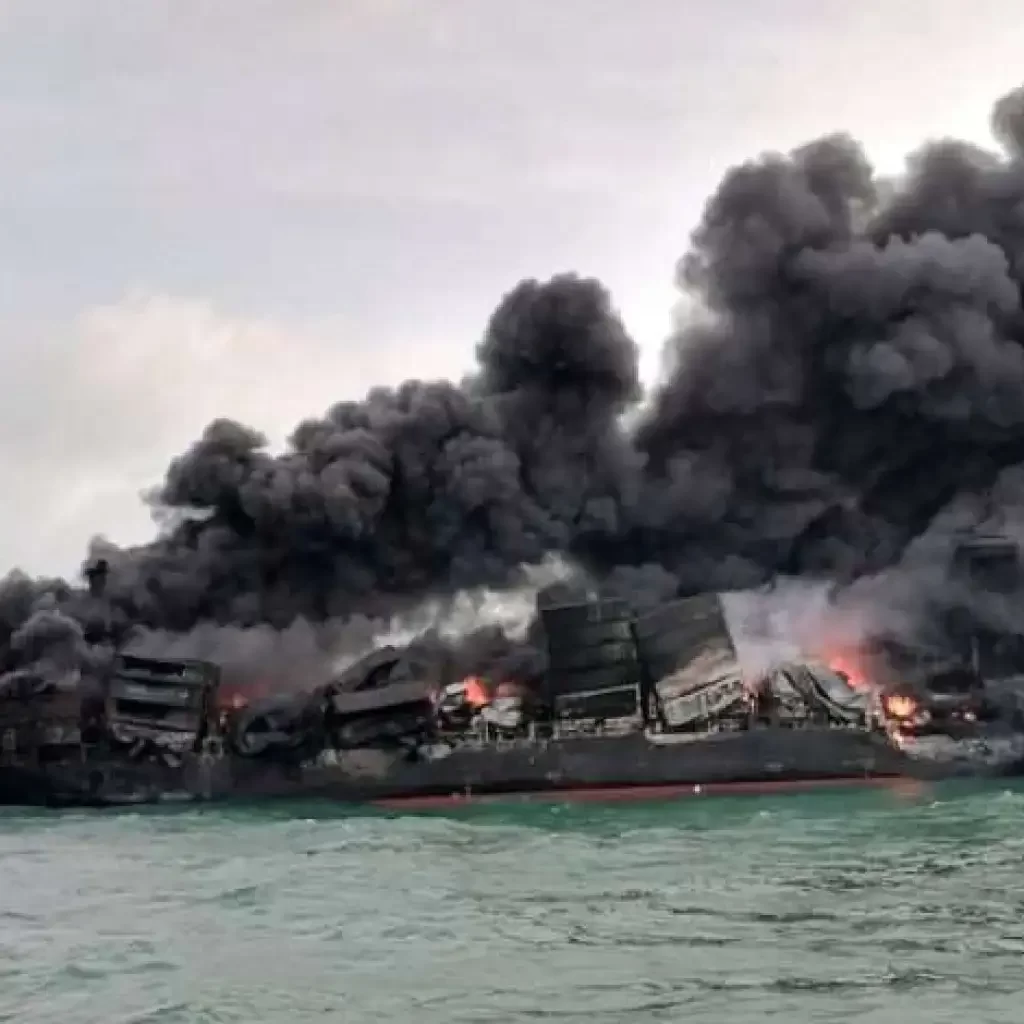Based on Research Writing : Francis Scott Key Bridge collapse occurred on March 26, 2024, at 1:28 a.m. EDT (05:28 UTC). The incident took place across the Patapsco River between Hawkins Point and Dundalk, Maryland, United States. The collapse involved the main spans and the three nearest northeast approach spans of the bridge after the container ship Dali struck one of its piers.

In the early hours of Tuesday, tragedy struck the bustling city of Baltimore. The iconic Francis Scott Key Bridge, a vital transportation artery connecting communities, suffered a catastrophic collapse after being struck by a massive container ship. The impact was devastating, resulting in loss of life and significant disruptions.
The Incident
- Date and Time: The incident occurred on a fateful Tuesday morning.
- Cause: The container ship Dali lost power and collided with the bridge support at a speed of approximately 8 knots (about 9 mph).
- Bridge Disintegration: The force of the collision caused a section of the bridge to disintegrate, plunging six workers into the dark waters below.
- Fatalities: Despite search efforts, officials believe that none of the workers survived.
- Port Closure: The collapse led to the closure of one of the country’s busiest ports.
The Vessel: Container Ship DALI
The vessel involved in this tragic event was the DALI, a container ship. Its lights were reportedly flickering before the collision, but the exact cause remains unclear. The impact with the bridge was catastrophic, highlighting the importance of safety measures and emergency response protocols in maritime transportation.
he MV Dali, a container ship involved in the tragic collision with the Francis Scott Key Bridge in Baltimore, was originally bound for Colombo, Sri Lanka. Departing from the Port of Baltimore in the United States, the ship carried a crew of 22 and two pilots on board. Unfortunately, its journey was cut short when it lost power and collided with the bridge, leading to the collapse that claimed lives and disrupted port operations. The Dali’s intended voyage to Sri Lanka was abruptly halted, leaving behind a devastating aftermath.
The MV Dali, a container ship that collided with the Francis Scott Key Bridge in Baltimore, was carrying a substantial cargo. Here are the key details about its cargo:
- Container Capacity: The MV Dali has a container capacity of 9,971 twenty-foot equivalent units (TEU)1.
- Hazardous Material: At the time of the accident, it was carrying nearly 4,700 containers, including 56 containers with hazardous material2.
- Dimensions: If stood upright, the MV Dali would reach almost to the top of the Eiffel Tower in Paris or about two-thirds of the way up the Empire State Building in New York3.
In Case if hazardous materials leak into the sea, the environmental consequences can be severe. Let’s explore the potential damages:
- Wildlife Impact:
- Habitat Destruction:
- Contaminated Sediments: The pollutants settle in sediments, altering the ecosystem and harming bottom-dwelling organisms.
- Loss of Biodiversity: Sensitive habitats like coral reefs, seagrass beds, and marshes may suffer irreparable damage.
- Water Quality Degradation:
- Chemical Dispersal: Hazardous materials disperse, affecting water quality and potentially rendering it unsafe for consumption.
- Altered pH Levels: Acidic or alkaline substances can disrupt the natural pH balance, harming marine life.
- Economic Impact:
- Fisheries Closure: Contaminated waters lead to fishery closures, affecting livelihoods and local economies.
- Tourism Decline: Polluted beaches and waters deter tourists, impacting coastal businesses.
- Long-Term Effects:
- Persistent Contamination: Some hazardous materials remain in the environment for decades, causing ongoing harm.
- Ecosystem Resilience: Recovery may take years, affecting ecosystem resilience and stability.
Lets Look at In summary about X-Press Pearl disaster:

The X-Press Pearl disaster off the coast of Sri Lanka had devastating environmental consequences. Let’s delve into the impact:
- Marine Plastic Pollution:
- The ship carried approximately 1,680 metric tons of plastic pellets (also known as nurdles), which spilled into the Indian Ocean and along Colombo’s beaches.
- These tiny plastic particles pose a significant threat to marine life. They can be ingested by fish, seabirds, and other organisms, leading to toxicity and bioaccumulation.
- Wildlife Casualties:
- Thousands of dead animals, including turtles, lionfish, and dolphins, were beached on the shores.
- The loss of marine life disrupted the delicate balance of the ecosystem.
- Economic Impact:
- Fishers lost their income due to the contamination of fishing grounds.
- The economic challenges posed by the pandemic were compounded by this disaster.
- Uncertain Health Risks:
- The chemical and polymer spill from the ship remains a concern. It included substances like caustic soda, nitric acid, and fertilizer.
- The long-term effects on human health and the environment are still uncertain.
- Corals and Biodiversity:
- The probable leaching of chemicals into the ocean threatens the corals, fish, turtles, and other marine life that abound off Sri Lanka’s coasts.
- Destruction of breeding grounds and habitat loss could have lasting consequences.
- Challenges for Local Scientists:
- Sri Lanka faces hurdles in assessing and mitigating the environmental damage due to economic and political challenges.
- Ensuring compensation for environmental losses remains a complex task.
the X-Press Pearl disaster is the worst ecological catastrophe Sri Lanka has ever faced, leaving a trail of plastic pollution, wildlife casualties, and uncertainty about the long-term effects.
Efforts to prevent, respond to, and mitigate such spills are crucial. Organizations like the National Oceanic and Atmospheric Administration (NOAA) play a vital role in assessing and managing environmental damage caused by oil and chemical spills
While there is no concrete evidence of a hidden geopolitical agenda or conspiracy behind the Francis Scott Key Bridge collapse in Baltimore, some conspiracy theories have emerged. Let’s break down the situation:
- NTSB Media Briefing – ”Francis Scott Key Bridge struck by Cargo Ship Dali” confirmed that 56 containers on the ship were carrying hazardous material, totaling 764 tons.
- These containers included substances like corrosives, flammables, and miscellaneous hazardous materials. There’s also a possibility of class nine materials, which could involve lithium-ion batteries.
As investigations continue, our thoughts go out to the families affected by this devastating incident. The Francis Scott Key Bridge, once a symbol of connectivity and progress, now stands broken—a stark reminder of the fragility of infrastructure and the need for vigilance in ensuring safety.
May those lost rest in peace, and may we learn from this tragedy to prevent such disasters in the future.
By Palitha Ariyarathna
Former Beachfield and Life Safety Officer
Note: Geopolitical – This Article is a Based on Reserch Writing Based on historical datas on www. The actual incident may have different details and consequences.
